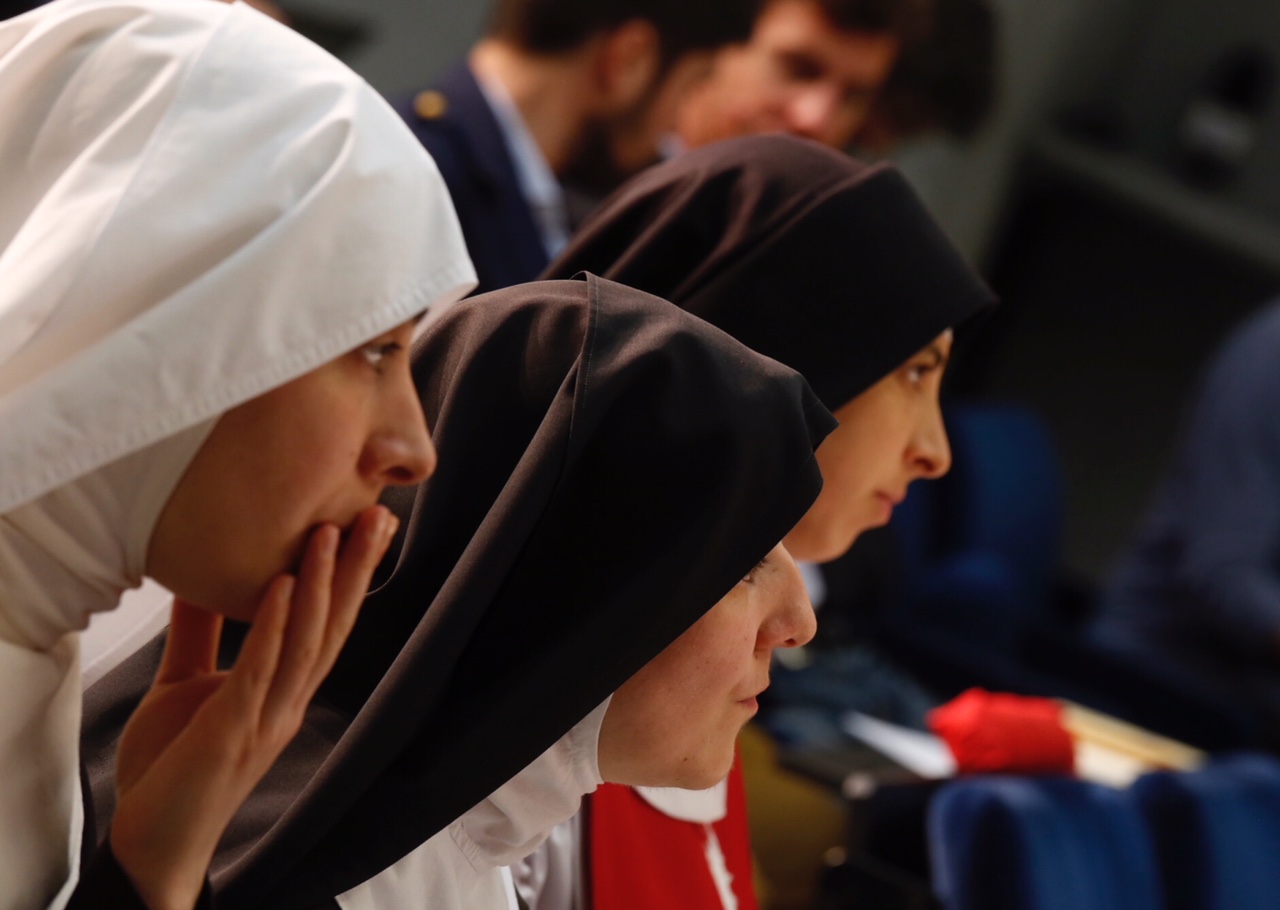The Cloister
These norms, which is what they ultimately are, were given to us so that they may be imbued with our personal imprint, with whatever enables us to live in full the “authenticity” of this “unique form of sequela Christi” expressed in monastic life. Only with time will we enter the spirit of this Instruction, with personal and community reflection, set in the animating, cherishing, flow of prayer. It won’t be easy. It won’t happen soon. Yet none of us nuns will stop following the path, viewing ourselves in evangelical transparency as we proceed

Many questions anticipated Cor Orans, the implementing instruction of the Apostolic Constitution Vultum Dei quaerere on women’s contemplative life of the Congregation for Institutes of Consecrated Life and Societies of Apostolic Life. Questions that stem from the thriving desire of sentire cum Ecclesia today, in our present life, not in the past, which, under many aspects, no longer belongs to us. A first reading of Cor Orans raises many questions, undoubtedly for its novelties and the derogations introduced. We will need to learn to renew our customs and norms, that might have become obsolete. Greater emphasis is placed on what we are asked of as nuns. The Instruction, with its 289 points and final provisions obviously requires broad, collegial reflection, that must be applied by every monastic tradition in the light of their own charism. The opening paragraph of the Instruction underlines that Pope Francis did not intend to abrogate Sponsa Christi – derogated only in some points -, but rather, it must be read as “a unitary vision”, bearing in mind “the intense and fruitful path taken by the Church in the last decades, in the light of the teachings of the same Council and considering the changed socio-cultural conditions” [12], reiterating that ‘praying heart, guardian of gratuity, wealth of apostolic fruitfulness and of a mysterious and multiform holiness is the feminine contemplative life in the Church the contemplative life of nuns’.” This is the fertile ground of the present document that reposes on specific foundations.
The provisions are not superimposed, nor are they purely a product of Canon Law with an abstract field of application. The gaze on reality is perceivable, on the daily act of incarnation represented by monastic life.
While the autonomy of the monastery is guaranteed, emphasis is placed on compliance to a set of well-defined criteria that leave no room to static approaches or expedients but which require the full participation of the nuns to contribute to a thriving community that transmits life. However, autonomy cannot be identified in a misinterpreted form of autocephaly,
We are expected to further cooperation between monasteries, regardless of the chosen juridical form,
that ensures communion, fraternity , that shuns community isolation but that pours into it the joys and pains, the steps and the difficulties of all monasteries in unison. It’s the sole possibility of vitality so that “every community may be a beacon that illumines the journey of the men and women of our time.” It’s a strenuous path, whose main avenues have been traced, but it’s a path that every community is called to create together to ensure that every calling may blossom, that it may become a living spring for the Church and for the world. The pace will be precious and unique, as precious and unique is every person, united by the same thrust. These norms, which is what they ultimately are, were given to us so that they may be imbued with our personal imprint, with whatever enables us to live in full the “authenticity” of this “unique form of sequela Christi” expressed in monastic life. Only with time will we enter the spirit of this Instruction, with personal and community reflection, set in the animating, cherishing, flow of prayer. It won’t be easy. It won’t happen soon. Yet none of us nuns will stop following the path, viewing ourselves in evangelical transparency as we proceed.